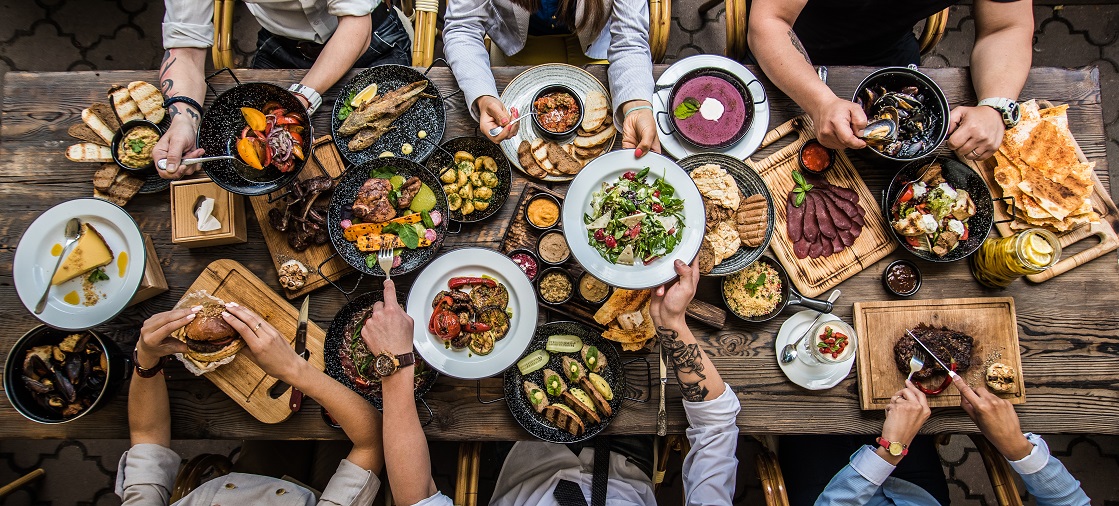
Dinner Parties are a lovely way to connect and bond with family and friends over a delicious meal and a couple of drinks. It’s that once a month gathering where you take several hours off to just sit back and enjoy each other’s’ company. However, before you know it you’ve giggled your way through a couple of jokes and a couple hundred of calories without even noticing it.
Watching your waist line at dinner parties is usually not an easy thing to do, due to the high calorie appetizers, the generous portion sizes of the main meal, and let’s not forget how you have to try every dessert option, which are all washed down with high calorie beverages.
Here are my top 10 tips to preventing that sneaky weight gain:
- Have a small high protein and high fibre snack such as a Greek yogurt cup and fruit before leaving the house so you don’t show up ravenous and dive into the chip bowl!
- Limit alcoholic and sweetened beverages to 1-2 drinks as they increase your caloric intake very quickly whilst providing little to no satiety. Remember, water is the best choice to quench your thirst.
- If you are bringing a starter or side dish, try and opt for a high fibre-low fat option such as oven-roasted vegetable skewers, a fresh green salad with edamame beans or a warm hearty lentil soup.
- The host asked you to bring dessert? Fruit salad, a lower calorie homemade variation of your favourite dessert or even bring a dessert that you don’t like and you know you won’t eat. This way, you will still eat Karen’s Tiramisu and Cathy’s peach cobbler, but you will save calories on the pumpkin pie you brought that your husband may like but you clearly don’t!
- Focus on catching up with friends and family, and place more attention on the conversation as opposed to the cheese and crackers or chips that are placed in front of you. If possible, position yourself away from the appetizers or sit as far as possible from them so they won’t be easy to reach.
- When dishing up your main meal, fill ½ of the plate with salad and/or vegetables. These foods are low in calories and high in fibre, and will fill you up. Once half of the plate has been filled, fill up ¼ of the plate with complex carbohydrates such as brown rice, quinoa or potatoes with the skin on and the other ¼ of the plate with lean protein such as fish, chicken or legumes.
- Aim to eat slowly and chew food thoroughly. This will give your body time to send signals to your brain saying that it is full. Attempt to eat intuitively and listen to your body’s hunger cues.
- If you are full when dessert time comes around, do not feel pressured to eat. Simply enjoying a cup of tea, especially peppermint tea, can help with digestion of the meal and may keep you distracted from not eating dessert.
- When dishing up dessert, many of us are no longer hungry, and just enjoying the indulgence of the dessert. Therefore, aim to keep dessert serving sizes to sample sizes. A small ¼-1/2 cup of dessert is all you need to enjoy the taste and not feeling deprived.
- Pressure from the host to eat more is often a barrier for many people. We often just overeat and have an extra helping from the host in an attempt to be polite, but ironically, the only reason the host is probably telling you to eat more is their way of being polite! Simply stating “I am full, thank you” or even saying “Perhaps I’ll eat more in a little while” are great ways to fend off from their pressure.
After all of this has been said, if you do happen to overindulge after a dinner party, do not let this cause you any distress. It was one night and you are human! There is no reason to over-exercise or restrict the next day. Your body is your friend and should be treated with love and respect. The best way to move on from overeating is to just move on with your life and get back to your usual eating pattern the next day.